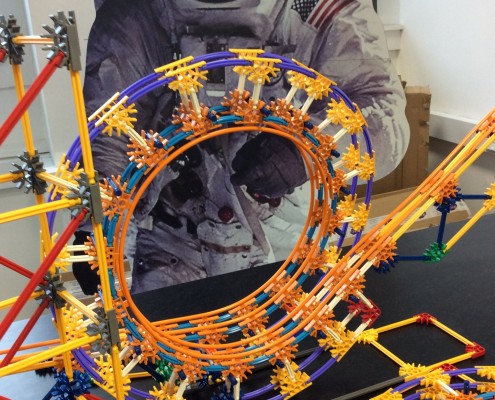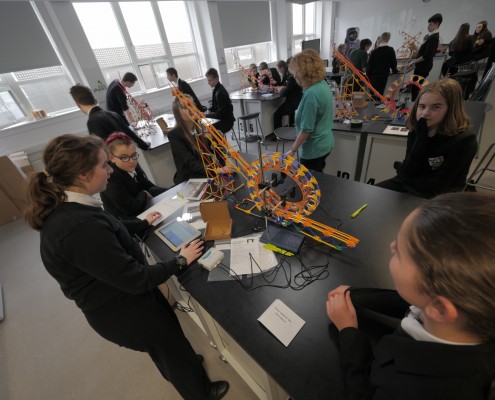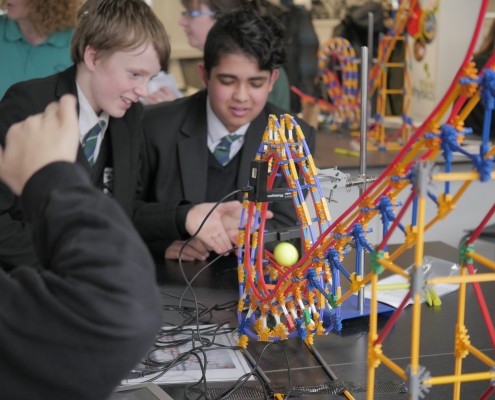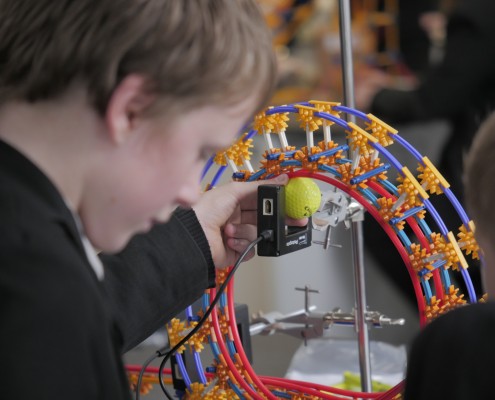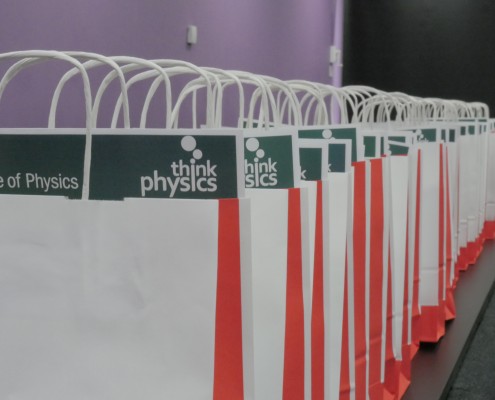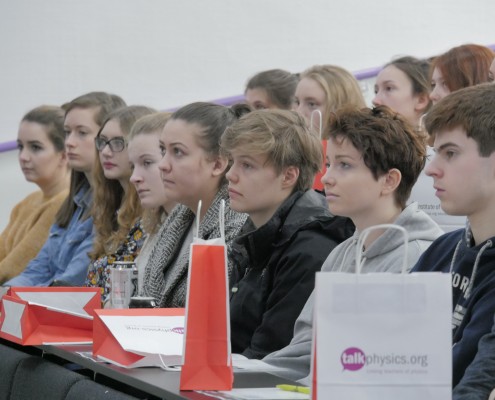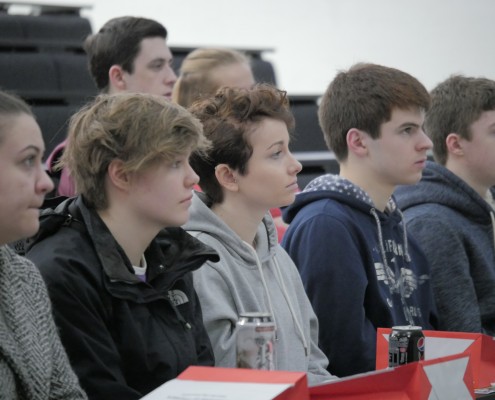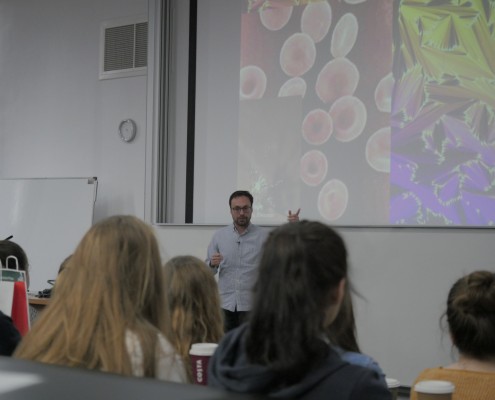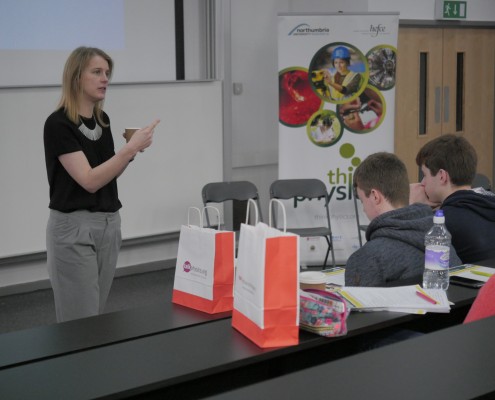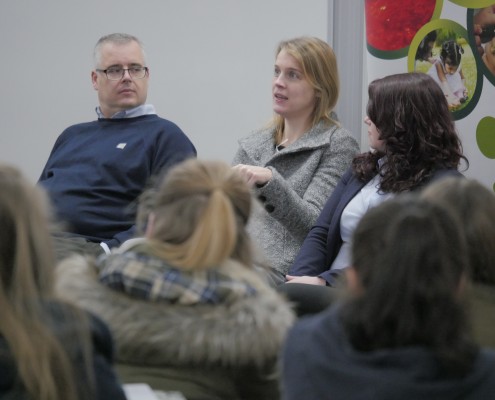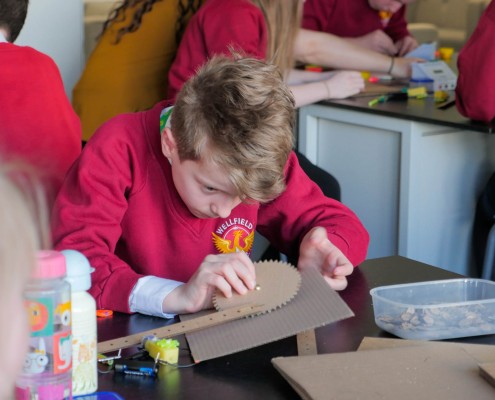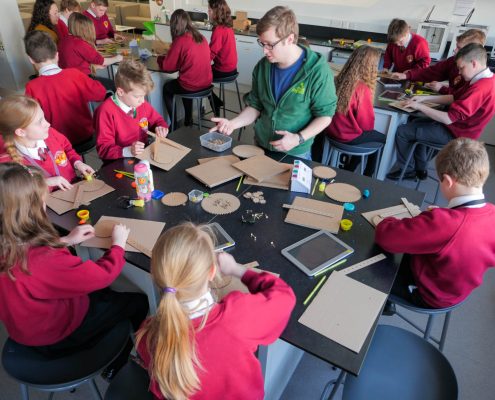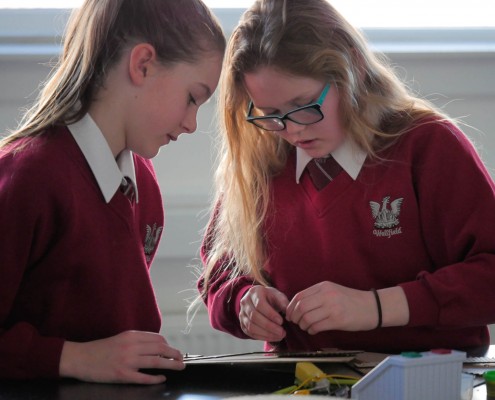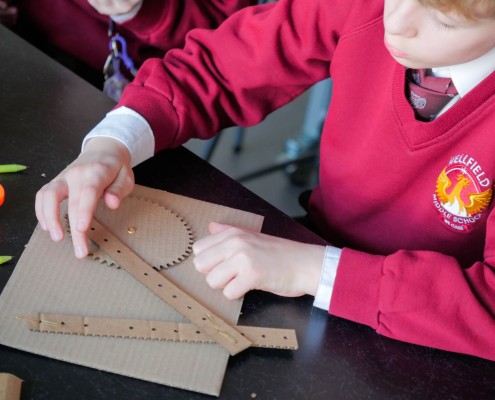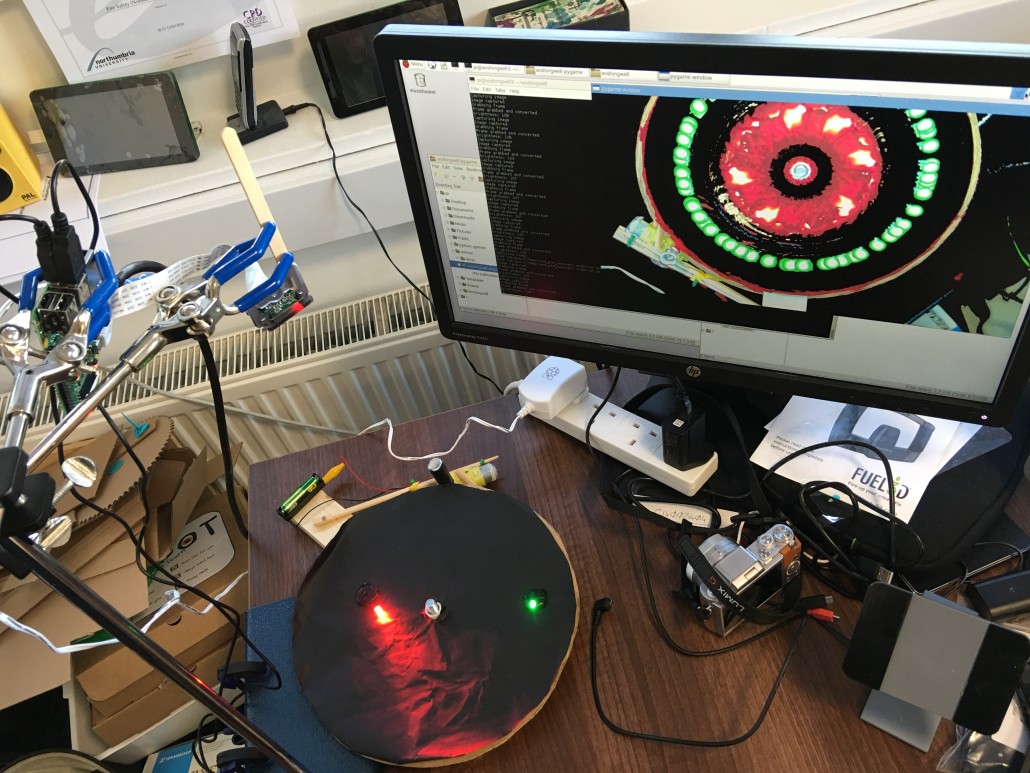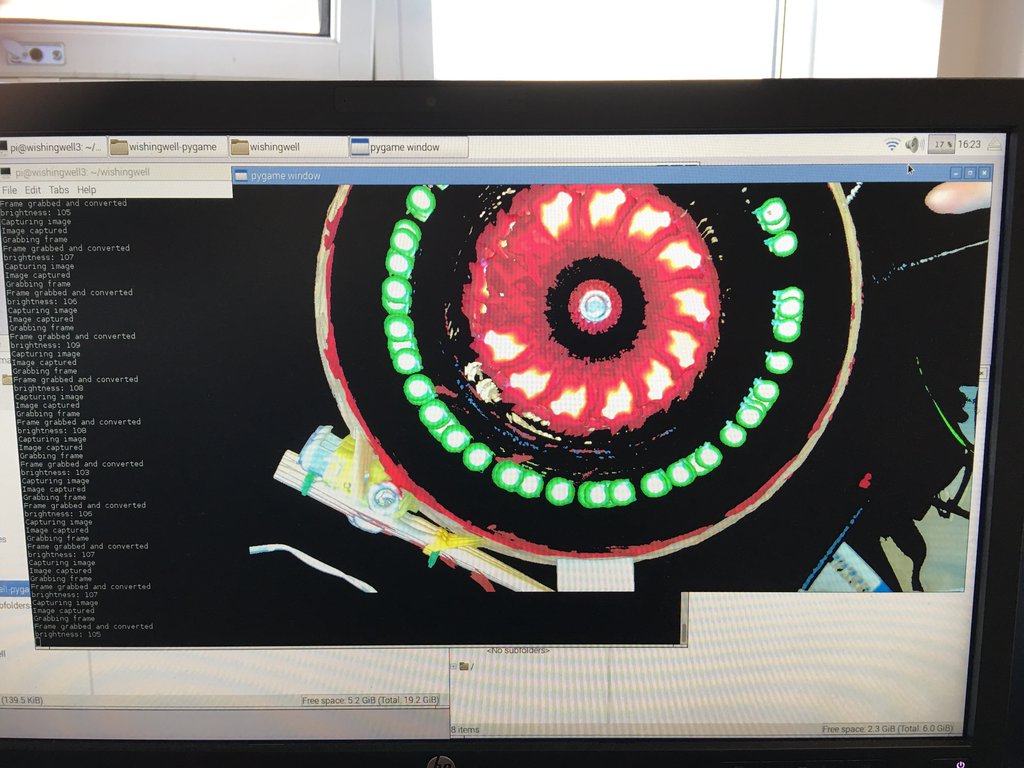British Science Week. That’s all for now, folks!
Each March, British Science Week celebrates the awesomeness of science, technology, engineering and maths. Over this year’s week, from 11th – 18th March, Think Physics joined in the fun by opening up specially-designed workshops and lectures to schools from across the North East. The result was a fantastically action-packed and rewarding week of workshops. We had Key Stage 2 students making Incredible Machines and Key Stages 3 and 4 investigating Rollercoaster Physics.
In Incredible Machines, pupils explored the simple mechanisms of gears and linkages and made their own machines from cardboard and paper fastners. The workshop invited children to look at the role of engineers in designing and creating machines which help shape the world around us.
In Rollercoaster Physics, pupils got hands-on with rollercoasters, building their own K’nex test track and using data loggers to measure the speed of a golf ball as it looped-the-loop. Would its speed match the predictions of the physics?
It was a pleasure to deliver workshops to schools including:
Corpus Christi Primary, Wellfield Middle, Stephenson Memorial Primary, Monkseaton Middle, Marden High, Burradon Community Primary, Southridge First, West Jesmond Primary, The Drive Community Primary and Usworth Colliery Primary.
We did not stop there, though. Oh, no. We ended the week with Physics in Perspective, a half-day of talks and discussions combining physics lectures and STEM careers information. We were delighted to welcome Professor Danielle George, a former pupil of Kenton School, who is now Professor in Microwave Communication Engineering at the University of Manchester and was the brilliant host of the 2014 Ri Christmas Lectures Sparks will Fly: How to Hack your Home. Danielle talked about the new rules of invention and showed participants how to use modern tools and technologies to have fun, transform everyday items and make a difference in the world. We were also joined by Northumbria University’s very own Dr. Rodrigo Ledesma-Aguilar who illustrated how nature has evolved some of the cleverest solutions to everyday problems by building “soft matter” structures. Exploration of these natural solutions is inspiring cutting-edge technological developments: bio-inspired smart materials.
We rounded off the day with a careers panel, where pupils had the opportunity to learn about the variety of pathways open those who study physics at A-Level, and to ask questions of the panel (Candace Adams from QuantuMDx, Paul Casson from Macaw Engineering and Danielle George).

